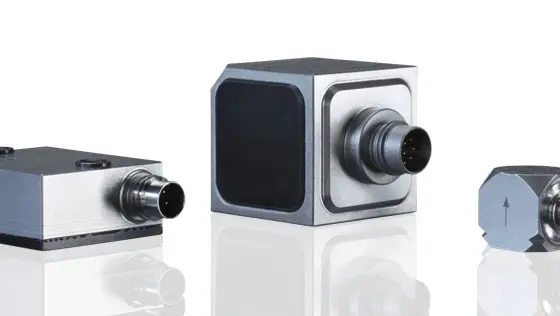How to mount an accelerometer to the unit under test?
When mounting an accelerometer to a test structure, the most important consideration is to have a quality mounting surface to attach it. The primary goal is to achieve a maximum useable frequency response for performing a vibration measurement. Since the mounting surface conditions affect transmissibility, a variety of adhesive mounting pads, clips, magnetic bases, studs and triaxial cubes with accurately prepared mounting surfaces are available for use in a wide range of applications. When frequencies higher than two to three kHz are considered, each accelerometer instruction manual provides specific recommendations for surface quality, sensor orientation and mounting torque.
Which are the methods to mount an accelerometer to a unit under test?
There are numerous methods to install an accelerometer. Depending on properties of the test unit, environmental conditions and application, the sensor can be mounted on a magnetic base, by means of adhesive pads, adhesive wax, adhesive cement or (isolated) mounting studs.
Which advantages or disadvantages do the various methods to install an accelerometer have?
| Mounting method | Advantages | Disadvantages | Remarks |
| Probe | Quick measurement | Lower accuracy | |
| Magnetic base | Easy and quick installation | Adds considerably to mass loading, lowers resonant frequency | Limited to ferromagnetic materials |
| Adhesive mounting base | Allows for stud mounting, provides electrical isolation | Lowers resonant frequency | Pads are usually exposed to test specimen |
| Adhesive wax | Ideal for lightweight units | Limited temperature range and acceleration amplitude | Fast and clean |
| Adhesive cement | Good and strong coupling of sensor to specimen; higher temperature stability than wax | Difficult to remove sensor; requires solvents, removal tool and/or heat | Suited for more permanent applications and high frequency measurements |
| Isolated mounting stud | Allows for strong coupling as well as for ground isolation | Requires threaded hole in specimen; base slightly lower resonance frequency | Control mounting torque; use silicone grease |
| Mounting stud | Best coupling of sensor to test specimen for highest frequency response | Requires threaded hole in specimen | Control mounting torque; use silicone grease |

